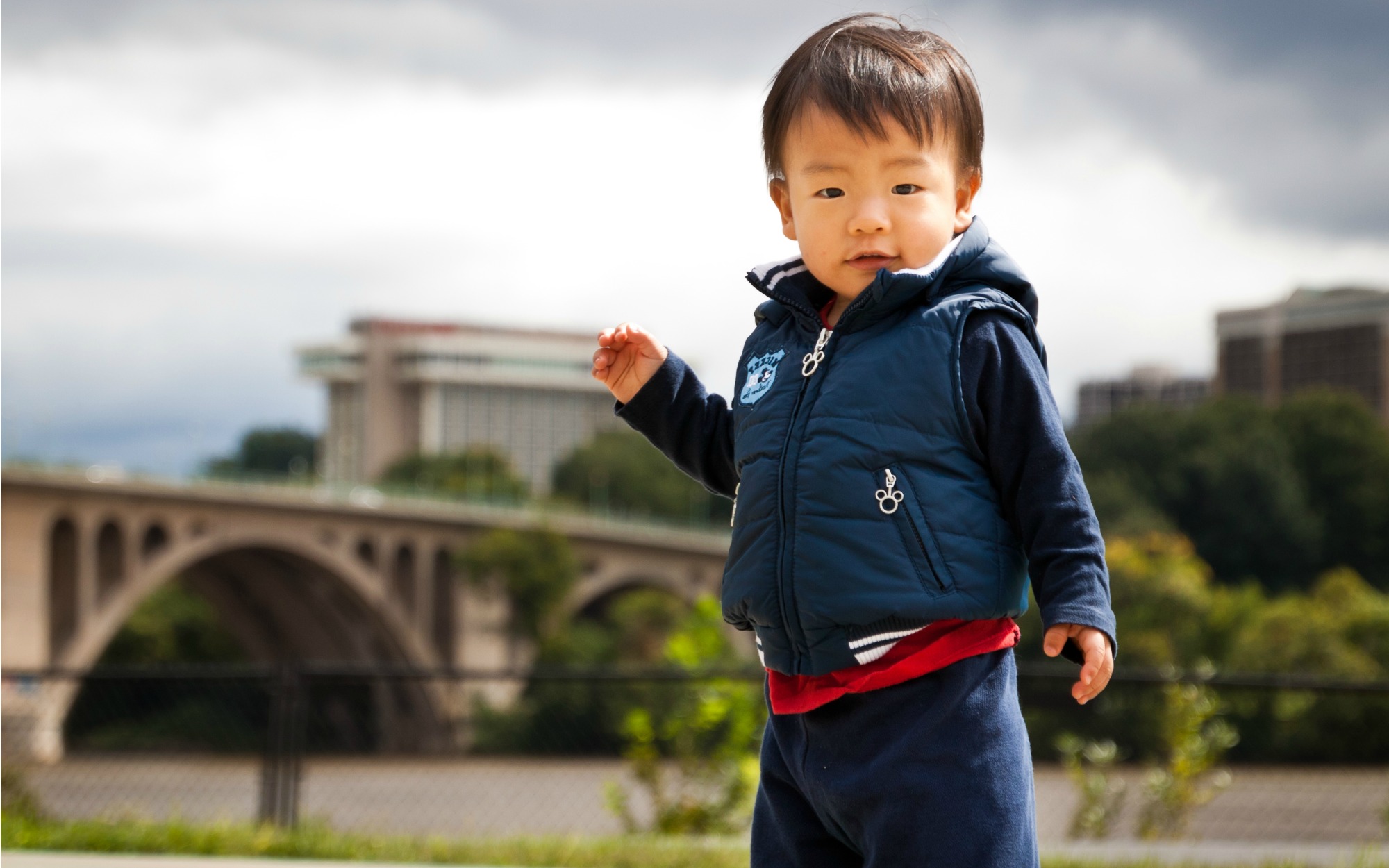Top 10 Tips for Raising Bilingual Kids

We’re Mash-Ups, we get it. Spanglish will always be our best language. But nothing makes us feel guiltier than the loss of our family’s languages, especially as we parent the next generation of Mash-Up Americans and choose, inadvertently or intentionally, what part of our cultural heritage we pass on to them. Gong Ke Gouldstone, a Shanghai-born Chinese-American Mash-Up and her husband, Chris, understand the struggle. Here, they share their tips on raising bilingual children. [Editor’s note: When we were learning to read, our mom would put sticky notes around the house with Spanish words on them. Pared. Mesa. Puerta. The bilingual word hunt was so fun. Try it!]
I was born and raised in Shanghai until I was 13 years old, which is when I followed my parents across the Big Pond to the U.S. When I stepped off the airplane, I was fluent in Mandarin Chinese as well as Shanghainese, the primary dialect spoken in and around Shanghai. By the time I met my husband in college four years later, English had already become my preferred and dominant language. I’d speak half Shanghainese and half English with my parents, but other than that, everything I said and consumed was in English: movies, music, books. I dreamed in English.
When Chris and I got married and had kids, we knew we wanted them to be bilingual. Often parents of bilingual families divide and conquer, with one parent speaking another language and another English. Or, both parents speak both languages equally. Another option is to outsource language learning, by hiring childcare or sending children to language immersion schools. We follow a mash-up of strategies, which I’ve dubbed “Do-It-Yourself Immersion.” Our first au pair was from China and taught basic pronunciation. Later we enrolled Harry, our middle kid, in a bi-lingual daycare.
It’s working! Harry, who is four years old, asks for xiao long bao, or dumplings, for snacks. Ben, who is two years old, loves the gou (dog) he sees on the street and the fei ji (airplane) in the sky. My oldest, Calvin, who is six years old, still thinks he’s too cool for Chinese, but springs to action when his younger brothers ask for bang mang (help).
Here are my top 10 tips for raising bilingual kids.

1. Get a nickname for everyone.
It’s important to start with names because we use names all the time. However, there is no need to start with a serious or legal name. This is just a nickname. Common Chinese nicknames, for example, are often objects, animals or food that’s associated with a personal characteristic. For kids, possible names are Little Rock, Little Carrot, Little Apple, Little Tiger, etc. For adults, it could be Big Mountain, Big Rabbit, Big Tiger, Big Bread, etc. In our house, we have Little Carrot, Little Tiger and Fuzzy Head. Anything fun and easy to say will do.
2. Replace some common, often-used words.
For families with young children who are still learning to speak, this is ideal because instead of learning “dog,” they can learn “gou” in Chinese or “perro” in Spanish. Be consistent, and it will work!
3. Do the same with phrases.
For example, good morning, good night, goodbye, hello, etc. Your kids will start incorporating more phrases over time.
My parents developed their own Chinglish.
4. Learn American Sign Language for babies.
This is surprisingly easy and fast to learn. Because it’s non-verbal, you can sign while speaking any language. Signing offers a way to translate your meaning in case your kid doesn’t understand the verbal words.
5. Ask in-laws and grandparents to speak their native language.
This we found to be hilarious. My parents, after many years in the U.S., have developed their own Chinglish. For them, switching from Chinglish to authentic Mandarin actually took some effort. But it’s important to involve different speakers in learning a language as it allows your kids to hear different pronunciations and uses.
6. Subscribe to TV programs!
This may run counter to parents who want to limit TV watching, but I think watching Chinese/Korean/Spanish/whatever language TV is a great way to learn languages. Kids are highly motivated to understand what’s going on in a show. The caveat is you probably need to sit down and watch with them until you find a few programs that are age and content appropriate.
7. Observe cultural traditions.
For us, this includes Chinese New Year celebrations, Mid-autumn Festivals, and Children’s Day, among others. Languages exist within a cultural context. Accompanying craft projects such as Orange Lanterns, Paper Lanterns or origami are also fun and educational for the whole family. If you live in a place with silk worms, get some as pets! Promise they don’t smell or make any noise.
Everybody uses chopsticks.
8. Food. Cook it. Eat it.
Make and enjoy traditional foods and use their names. We make dumplings, wontons, xiao long bao and spring rolls and take our kids to authentic Chinese restaurants. Everybody uses chopsticks.
9. Play number games.
Puzzles, counting money, counting blueberries — count it all in another language.
10. Travel.
We went to China with my oldest son when he was four years old. He is now six, and I’m amazed by how much he remembers about the trip. From eating Peking duck to early morning walks on the Bund, from flying kites to eating watermelon with no shirt on… it had gone much more smoothly than I had hoped. He still asks, when we can go back there again, to which my answer has been: “When you learn to speak!”
¿Quieres mas? For more on language, ven aqui:
English, Our Shared National Delusion
Guilt. We Feel It. Turns Out You Do Too.





